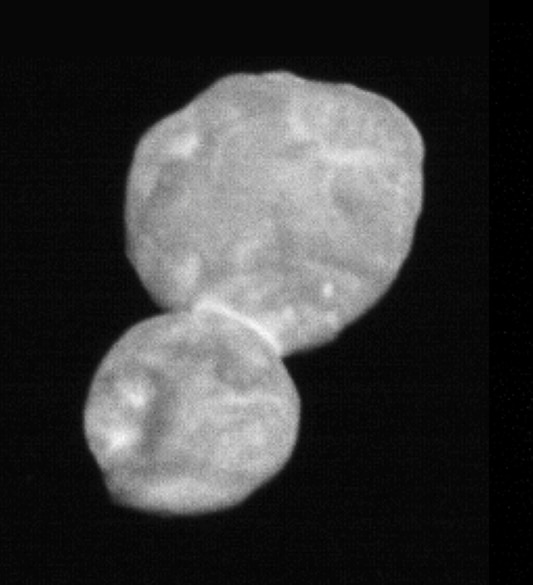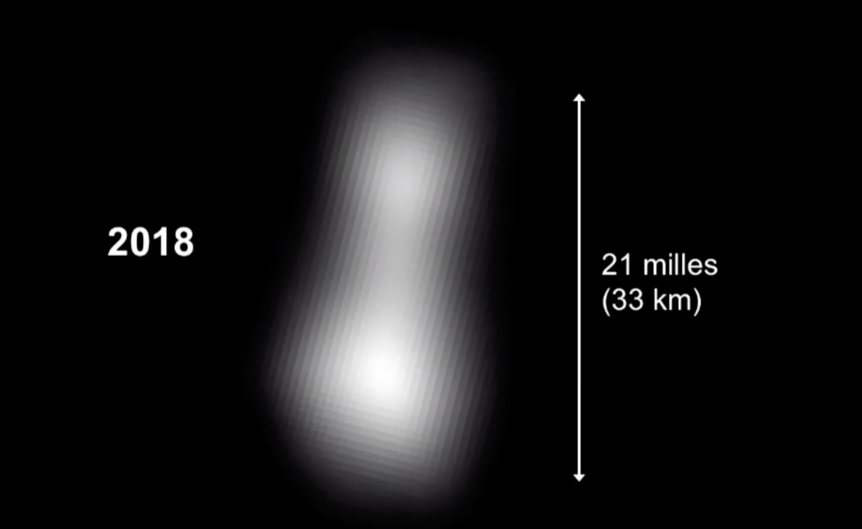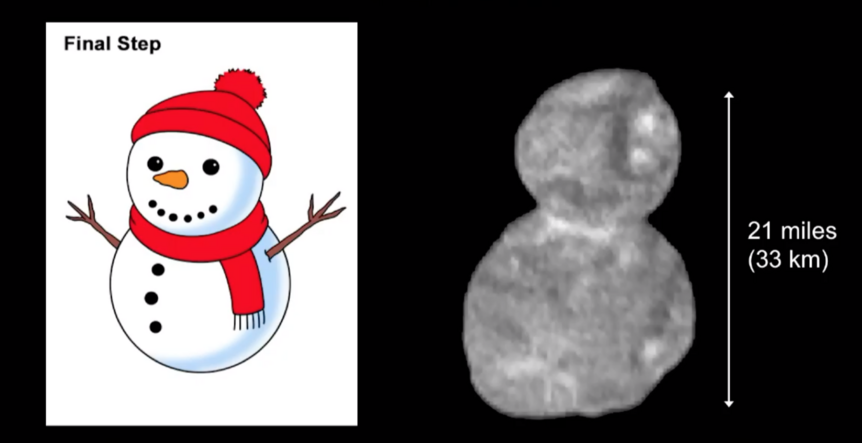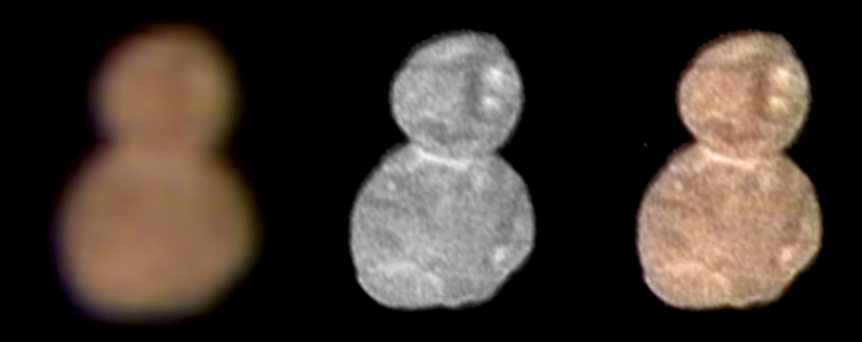Create a free profile to get unlimited access to exclusive videos, sweepstakes, and more!
NASA reveals the most HD image of Ultima Thule ever, and it's pretty much a space snowman
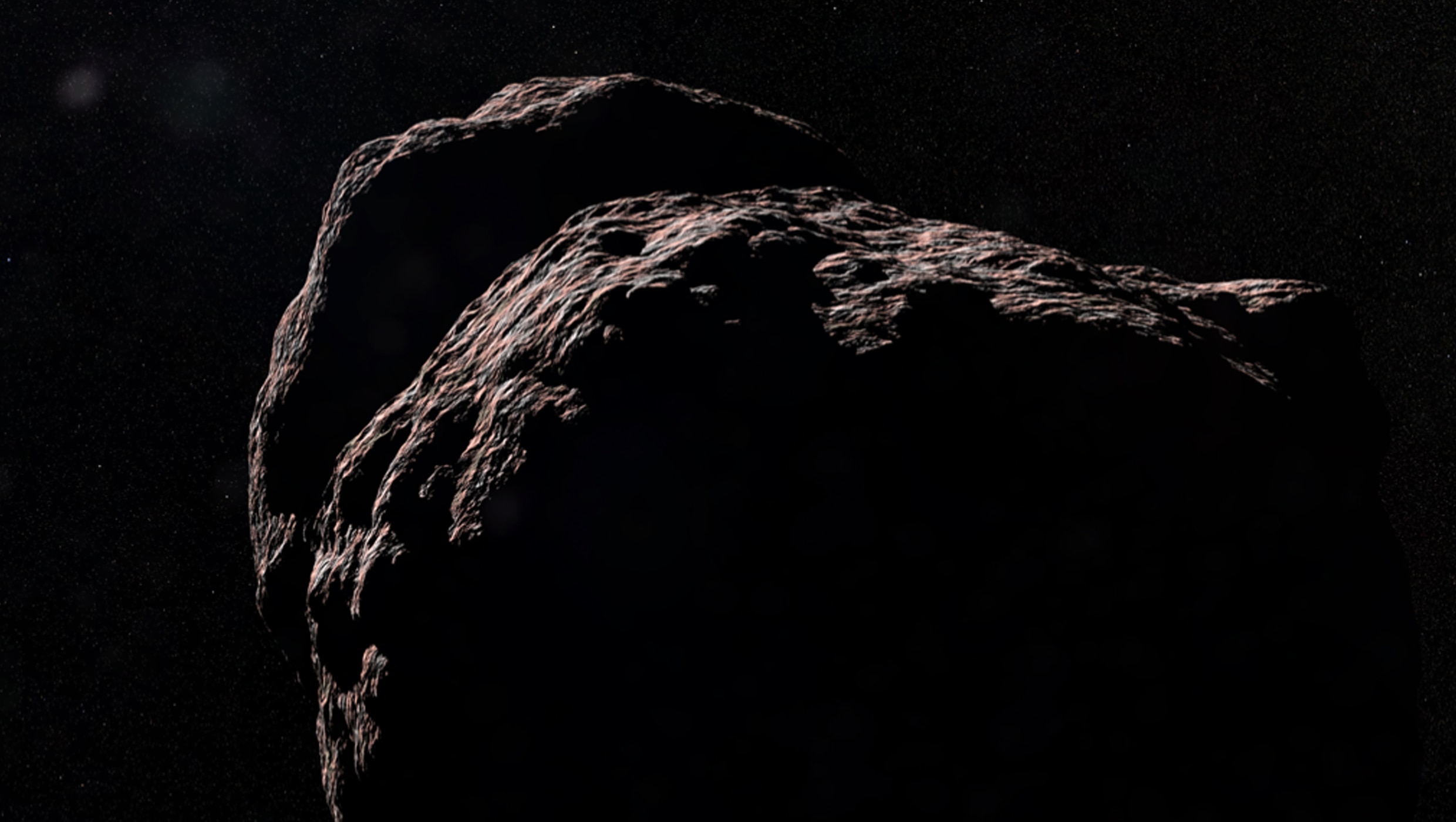
The last time we saw Ultima Thule, it was a blur against the blackness of space, something not nearly convincing enough of its existence. The new images and science that have just been beamed back to NASA have fleshed out that pixelated blur into something believable. A distant object now actually feels real to everyone here on Earth.
In a live press conference earlier today, New Horizons Principal Investigator Alan Stern, Deputy Project Scientist Kathy Olkin, New Horizons Co-Investigator Carly Howett, and New Horizons Geology and Geophysics Team Lead Jeff Moore (from NASA Ames) revealed the newest hi-def image of the Kuiper Belt object.
“New Horizons swept down over Ultima Thule in a technical success beyond anything ever attempted before in space flight,” said Stern in a livestream of the press conference on NASA's New Horizons site, and the shot of an elated (which is still an understatement) New Horizons team he put up onscreen spoke for itself. “What this spacecraft and this team accomplished is unprecedented. The object that we rendezvoused with at midnight on New Year’s Day wasn’t even known until the summer of 2014.”
The sun is 1,900 times fainter on Ultima Thule than it is on a sunny day on Earth. Its almost nonexistent reflectivity didn’t exactly help the New Horizons team as they sought it out.
“We were chasing it in the dark at 32,000 miles an hour, and all that had to happen just right,” Stern stressed.
Just one day has made a startling difference in how we view this mysterious Kuiper Belt object. This is a flashback to Dec. 31, 2018, when the best image New Horizons could possibly get of Ultima Thule a little over 155,000 miles out was this pixelated blob:
That is so last year. This is how Ultima Thule is now showing itself to NASA and the rest of the planet from 17,000 miles out: The bowling pin of two days ago has now morphed into a snowman — or BB-8, as the Twitterverse is saying.
New Horizons will get even more up close and personal with Ultima soon — as soon as tomorrow — with at least one image expected to come in at almost 200 miles per pixel. While Earth anxiously sucks in a deep breath of anticipation, scientists have finally determined the color of Ultima Thule. It is a dusty red not unlike Mars but completely unrelated.
The color is thought to be the result of processed volatile ices that have been irradiated.
Ultima Thule is now thought to be the oldest object (and the first contact binary) ever seen by the eyes of a spacecraft, a sort of Wayback Machine to a time only several hundred thousand years after the Big Bang, when random objects were constantly crashing into one another and accreting into what would be planets and planetesimals, supposedly formed after two objects on a collision course floated toward each other at around a mile an hour and fused together rather than head-butting each other.
(via NASA)
